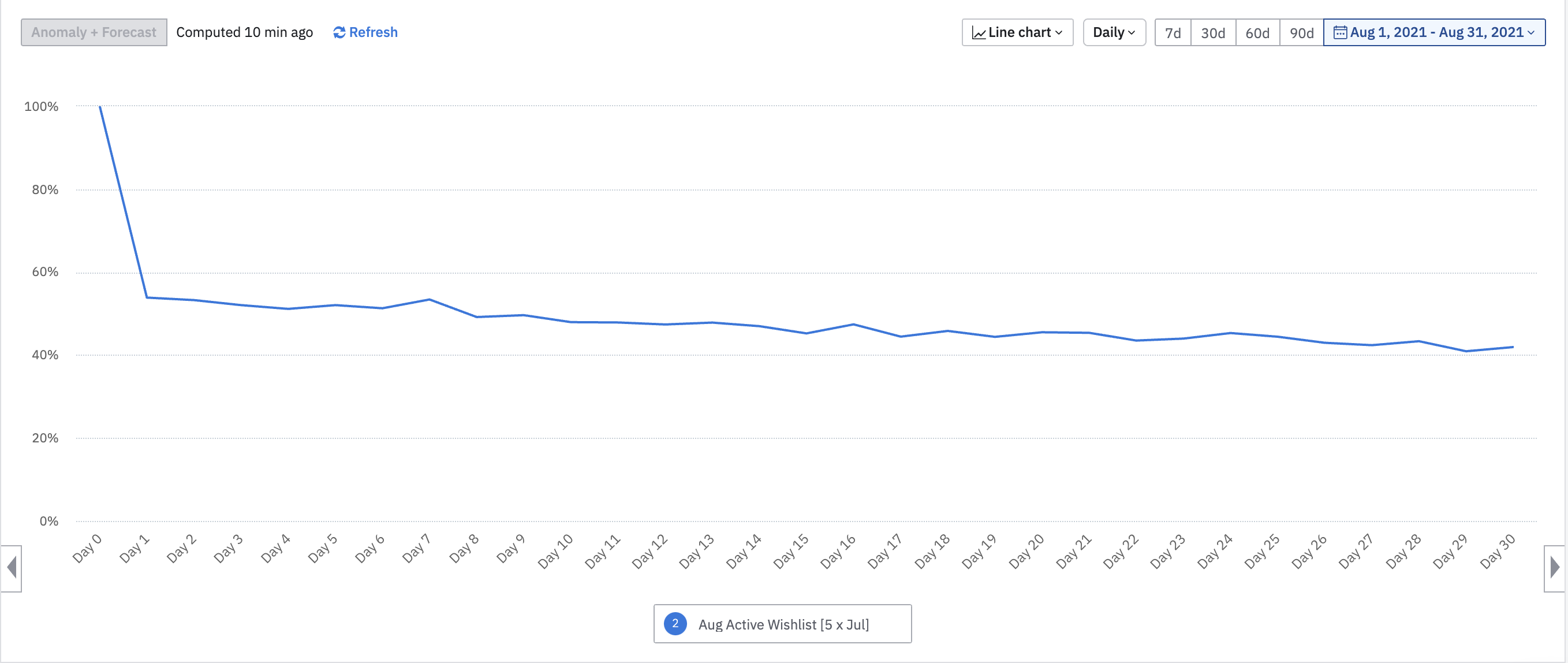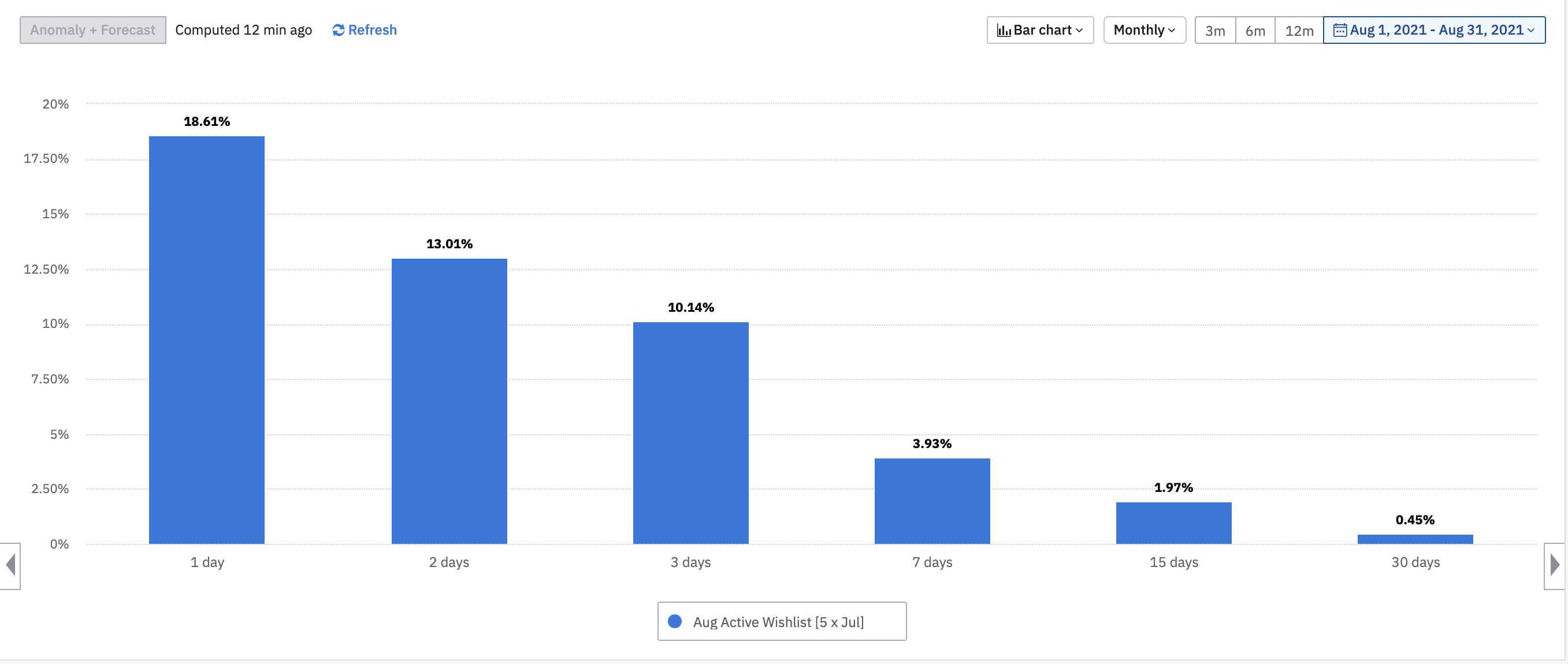Hi!
I’m new at using amplitude and I’m struggling to understand the relation between stickiness and retention.
I have set up a cohort with users that have a strong usage for a specific event (“AddToWishList” event), +5 events during july 2021, and at least one event (“AddToWishList” event) during august 2021.
Then I plot a daily retention chart during the period of august 2021 for the same starting event and return event, i.e. “AddToWishList”. Our daily retention is over 40% for the entire period as the figure shows.

So far so good. Then I plot the stickiness chart for the same event and time period and cohort. The below chart shows that 18% of users from the segment have emit the event only once and only a few users really “sticked” with the event.

Given a +40% of retention for a given cohort, I would have expected a higher stickiness for the same event. This said, I expect users to have used at least 15 days during the same evaluation month.
Given the above information, what should be the interpretation? Is there an inconsistency between both analysis?
Please if someone could help me! Would really appreciate it! 🙂
Regards!
Santiago